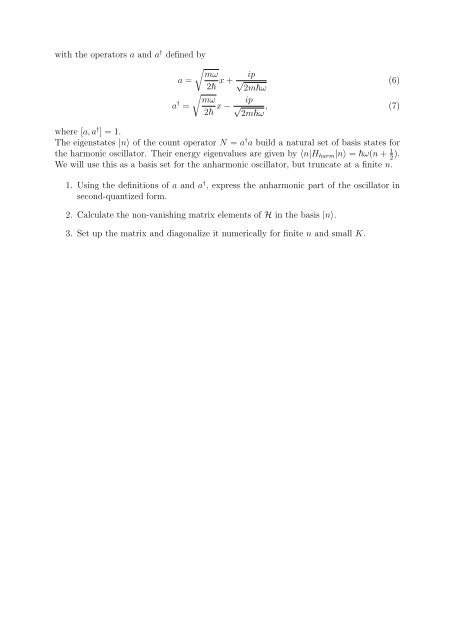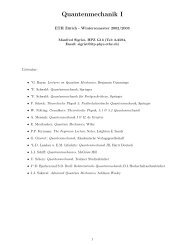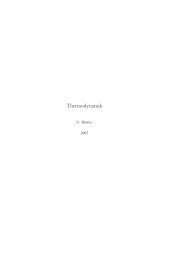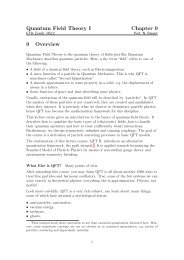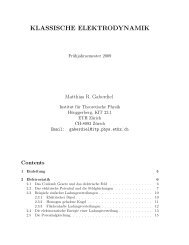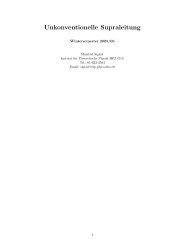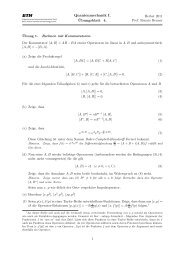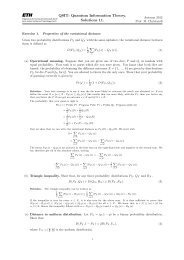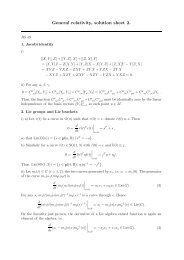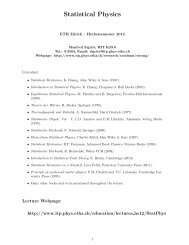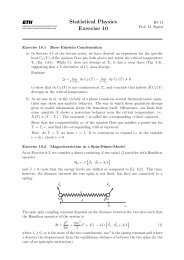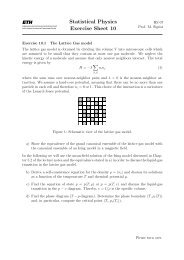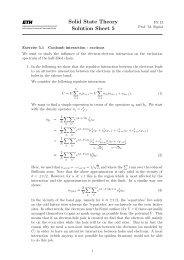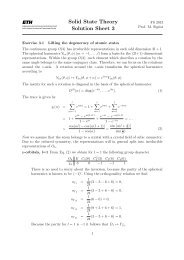Computational Quantum Physics Exercise 2
Computational Quantum Physics Exercise 2
Computational Quantum Physics Exercise 2
You also want an ePaper? Increase the reach of your titles
YUMPU automatically turns print PDFs into web optimized ePapers that Google loves.
with the operators a and a † defined by<br />
√ mω<br />
a =<br />
2 x +<br />
√ mω<br />
a † =<br />
2 x −<br />
ip<br />
√<br />
2mω<br />
(6)<br />
ip<br />
√<br />
2mω<br />
, (7)<br />
where [a, a † ] = 1.<br />
The eigenstates |n〉 of the count operator N = a † a build a natural set of basis states for<br />
the harmonic oscillator. Their energy eigenvalues are given by 〈n|H harm |n〉 = ω(n + 1 2 ).<br />
We will use this as a basis set for the anharmonic oscillator, but truncate at a finite n.<br />
1. Using the definitions of a and a † , express the anharmonic part of the oscillator in<br />
second-quantized form.<br />
2. Calculate the non-vanishing matrix elements of H in the basis |n〉.<br />
3. Set up the matrix and diagonalize it numerically for finite n and small K.


